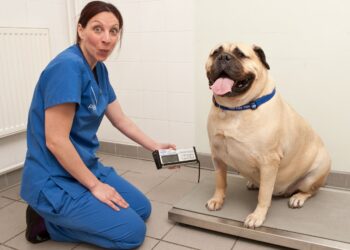Spot disease is caused by the bacterium Erysipelothrix rhusiopathiae. Not only poultry is affected. It is a bacterium that is mainly known in pigs and sheep. Remarkably, the disease is becoming less and less common in turkey production companies. Spot disease is a zoonosis and can therefore also infect humans. We mainly see the disease on industrial poultry farms, especially laying farms with free-range chickens and organically reared animals.
Also in people
Spot disease is a so-called zoonosis and can therefore be transmitted from animals to humans. This disease is also called fish dandruff in humans. Veterinarians, livestock farmers, and personnel working in slaughterhouses and the fish processing industry are regularly affected by this disease.
Reading suggestions; Care Of Chickens During The Summer Day
Where the skin is affected and comes into contact with the bacteria, after a few days the infected place starts to itch and a burning sensation occurs. The skin swells and discolors to blue-red and is also sensitive. Small wounds on the hands are often the source of infection. Blood poisoning can also occur. This infection can be treated very well with antibiotics, but general practitioners and hospitals are generally not very familiar with this disease so that a correct diagnosis is not always immediately made.
Infection
Skin wounds, mucous membranes, and the intestinal tract are probably responsible for the entry of the bacteria. Fish meal, spread on pig manure, moist soil, water, and wild birds are seen as possible sources. Possible vectors (spreaders) are flies, mice, mosquitoes, and also the blood mite. The cautious formulations show that not too much is known about the causative agents. However, the spot disease bacterium has been found both on and in the red mite and it is therefore plausible that the red mite can also infect new flocks. Cadavers that have died of spot disease are also a source of infection in cannibalism.
Resistant
The bacterium Erysipelothrix rhusio pathiae is common and insensitive to environmental and chemical influences. The survival time in the soil can sometimes take several years. This depends on the pH of the soil and the temperature. The bacteria survive longer, especially at low temperatures. The bacterium can also survive in blood mites, mosquitoes, and flies.
outdoor outlet
It will be clear that chickens with an outdoor area run a higher risk of spot disease than animals that stay indoors. If there has been an outbreak before, the soil can of course harbor a lot of stain disease bacteria.
Reading suggestions; 12 Common Chicken Diseases, Symptoms And Treatment
Incubation period and symptoms
The incubation period, the time between infection and the outbreak of the disease, is between two to five days. The chickens behave sluggishly and give an impression of general weakness. Diarrhea may occur. A decrease in egg production is also often observed. Outages occur that may be minor but may last a long time. Acute deaths also occur, up to a dropout rate of 25%. This is especially in flocks where pecking and cannibalism occur. The pecking causes wounds and allows the bacteria to enter.
Diagnosis
Because the symptoms and the results of the autopsy are not typical for spot disease, additional bacteriologists are therefore also necessary to confirm the disease. Bone marrow, spleen, or liver is used for this examination.
Therapy
Spot disease can be treated well with antibiotics.









